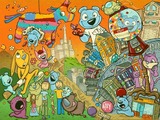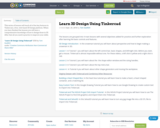A Project of Oregon Writes
Short Description:
This textbook guides students through rhetorical and assignment analysis, the writing process, researching, citing, rhetorical modes, and critical reading. Guided by Oregon's statewide college writing outcomes, this book collects previously published articles, essays, and chapters released under Creative Commons licenses into one free textbook available for online access or print-on-demand. Faculty guide available: https://canvas.instructure.com/courses/1035227Order a print copy: http://www.lulu.com/shop/jenn-kepka/oregon-writes-open-writing-text/paperback/product-23840147.html
Long Description:
This textbook guides students through rhetorical and assignment analysis, the writing process, researching, citing, rhetorical modes, and critical reading. Using accessible but rigorous readings by professionals throughout the college composition field, the Oregon Writes Writing Textbook aligns directly to the statewide writing outcomes for English Composition courses in Oregon.
Created through a grant from Open Oregon in 2015-16, this book collects previously published articles, essays, and chapters released under Creative Commons licenses into one free textbook available for online access or print-on-demand.
Faculty guide available: https://canvas.instructure.com/courses/1035227
Order a print copy: http://www.lulu.com/shop/jenn-kepka/oregon-writes-open-writing-text/paperback/product-23840147.html
Word Count: 66415
ISBN: 978-1-63635-058-5
(Note: This resource's metadata has been created automatically by reformatting and/or combining the information that the author initially provided as part of a bulk import process.)












